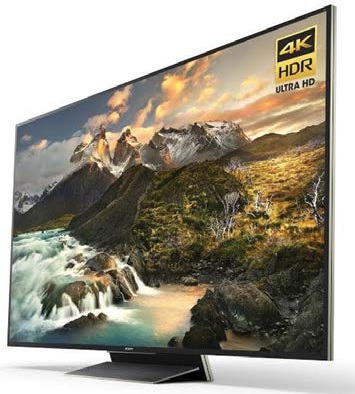High Hopes for Higher Resolution
First off, let’s dispense with the niceties. All of this talk within the broadcast community about how consumers will react to the quality of 4K/UHD pictures is just that: talk. How we personally feel about the degree of difference in resolution and consumers’ perception of said quality won’t matter much to shoppers making a decision about whether to trade up to next-generation television. To a lot of people, UHD isn’t worth the price of the upgrade yet, but once prices come into line with those of current 1080p sets (which they are quickly doing), it will be, especially once UHD becomes the only option available. As for high dynamic range and high frame rate? Sure, they are icing on the cake (with OLED as the cherry on top), but the jury is still out on how much of an effect they will have on consumers’ choices.

Sony launched its Z-Series UHD/4K TVs in July, featuring picture enhancements such as HDR capability and new backlight technology. The big variable in the rollout of UHD is in the availability of content. Much has changed since the rollout of HDTV, the largest being the ubiquity of over-the-top alternatives to broadcast and traditional pay-TV services as well as the explosion of mobile screens. Survey after survey demonstrates that millennials are abandoning the traditional big-screen TV in favor of tablets and smartphones. So regardless of how one feels about the experience, the reality is that resolution and picture quality aren’t always the overriding factors in how one chooses to consume media.
Two recent reports shine some light on the future of UHD and reach similar conclusions about which factors will determine the format’s success: content and bandwidth availability and device capabilities. And both conclude that OTT will be the driver of the format.
In its report, “A Clearer Picture of Growth: 2016 Global 4K/UHD Industry Survey,” SNL Kagan interviewed 475 global video service providers (including pay TV/OTT operators and content producers), of which 96 percent of respondents believe that a majority of consumers and video service providers will adopt 4K/UHD by 2020, with 78 percent of total respondents expecting launches within two years. Differentiation from competition as well as the need to be “in the game” are the biggest drivers for adoption among survey respondents, who also believe that consumers will be willing to fork out an extra 10 to 30 percent on top of their current services for 4K content. Connected 4K TVs will be the primary device for viewing high-resolution content, with live sports and early release movies expected to be the most popular content for consumption. Globally, the Asia-Pacific region is expected to lead the pack in terms of early adoption, with Europe and North America close behind.
Since live sports will be a major driver of 4K adoption, concerns over bandwidth availability for 4K/UHD take on greater importance, with more than 60 percent of respondents rating the issue as potentially having a high impact. UHD is a notorious bandwidth hog and adding HFR and HDR to the picture just adds to the burden (and despite the rumors of its demise, physical media, including UHD players are expected to still be an important part of the distribution mix). Fortunately some of the concerns over bandwidth can be alleviated by advances in compression technology; according to the survey, 54 percent of video service providers say they will offer different resolutions to fit multiple devices, however only 40 percent of content producers expect to provide content at different resolutions.
Another report on the format from Juniper Research estimates that more than 189 million unique users will be using 4K OTT services globally, up from just 2.3 million this year. In its report, “Digital TV and Video: Network and OTT Strategies 2016–2021,” it predicts that in the United States, 10 percent will be watching 4K video online by 2021 compared to just one in 500 this year, with connected TVs being the dominant channel. It bases much of its optimism on the increasing availability of 4K options from the likes of Youtube, Netflix and Amazon as well as the market availability of 4K-capable OTT boxes. Juniper also predicts that 8K will become a market force by 2020, with TV shipments growing threefold between 2020 and 2021 to 400,000 per year.
So when it comes to adopting next-generation 4K/UHD media, the experts are relatively bullish, though with several caveats—all related to timing, availability and consumer preferences. Pretty much what it was like with HDTV.
Get the TV Tech Newsletter
The professional video industry's #1 source for news, trends and product and tech information. Sign up below.
Tom has covered the broadcast technology market for the past 25 years, including three years handling member communications for the National Association of Broadcasters followed by a year as editor of Video Technology News and DTV Business executive newsletters for Phillips Publishing. In 1999 he launched digitalbroadcasting.com for internet B2B portal Verticalnet. He is also a charter member of the CTA's Academy of Digital TV Pioneers. Since 2001, he has been editor-in-chief of TV Tech (www.tvtech.com), the leading source of news and information on broadcast and related media technology and is a frequent contributor and moderator to the brand’s Tech Leadership events.

